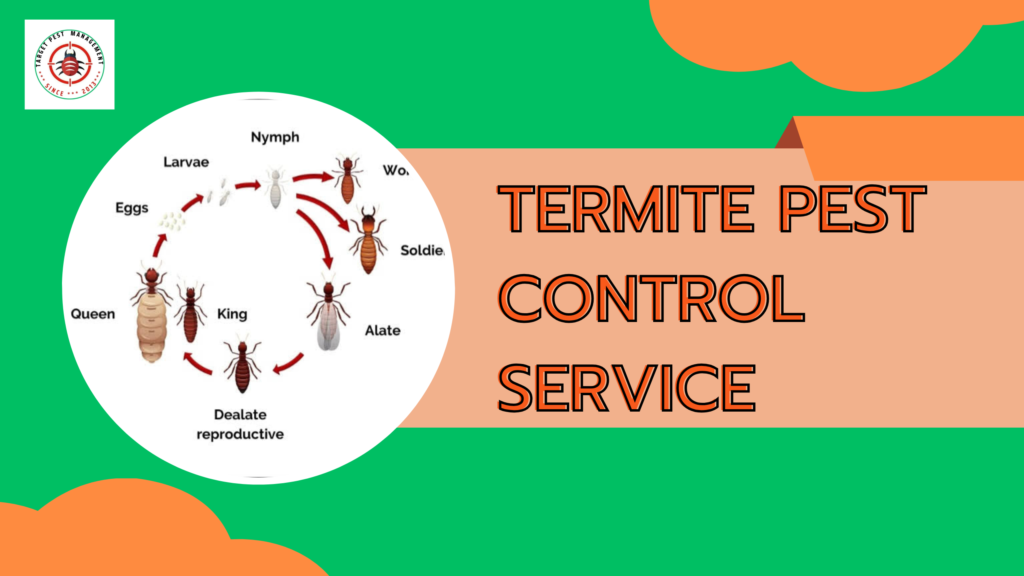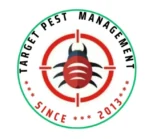TERMITE PEST CONTROL

Termite Pest Control Service
Introduction
Termites are highly destructive pests that silently cause heavy damage to properties by attacking wood, paper, and similar materials.
A professional termite pest control service is essential to protect homes, offices, and industrial structures from severe structural damage.
Termite Characteristics
● Social Insects: Termites live in colonies with a queen, king, soldiers, and workers.
● Silent Destroyers: They attack from the inside out, often unnoticed until severe damage occurs.
● Cellulose Feeders: Their diet is primarily wood, paper, plants, and any material containing cellulose.
● Moisture Dependency: Subterranean termites especially require moisture to survive.
● Tunneling Behavior: They build mud tubes to travel and maintain humidity.
Termite Life Cycle
The termite life cycle has four main stages:
1. Egg Stage:
○ Queen termite lays thousands of eggs daily.
○ Eggs hatch in 2–4 weeks depending on temperature and humidity.
2. Nymph Stage:
○ Young termites (nymphs) are immature workers.
○ They may develop into workers, soldiers, or alates (winged reproductives).
3. Mature Stage:
○ Workers: Maintain the colony by gathering food and building tunnels.
○ Soldiers: Defend the colony from ants and predators.
○ Alates: Winged termites that leave the nest to form new colonies.
4. Swarming Stage:
○ In certain seasons, large numbers of alates fly out to start new colonies.
○ Discarded wings are often a first sign of infestation.
Modes of Termite Treatment
1. Pre-Construction Anti-Termite Treatment
● When: During building construction.
● Method:
○ Soil treatment with chemicals (Chlorpyrifos, Imidacloprid, etc.).
○ Application at foundation trenches, plinths, and flooring stages.
● Purpose: To create a long-lasting chemical barrier that termites cannot cross.
2. Post-Construction Anti-Termite Treatment
● When: After the property is fully built or when infestation is found.
● Method:
○ Drilling small holes along walls, floors.
○ Injecting termiticide solution under pressure.
○ Surface spray on walls, baseboards, doors, and windows.
● Purpose: To eliminate current colonies and prevent re-infestation.
3. Wood Treatment
● Direct Injection: Into wood furniture, door frames, etc.
● Surface Application: Spraying chemicals to penetrate and protect wood structures.
4. Baiting System
● Install termite bait stations in soil.
● Termites consume the bait and transfer it to the colony, leading to colony elimination.
Chemicals and Products Used
● Fipronil 0.03% SC
● Imidacloprid 30.5% SC
● Chlorpyrifos 20% EC
● Bifenthrin 2.5% EC
(Only ISI/BIS-approved and environment-friendly chemicals are used.)
Exclusive Features of Our Termite Pest Control Service
● Expert Inspection with advanced tools.
● Customized Treatment Plans as per infestation level.
● Eco-friendly Options available.
● Long-term Warranty: 3 to 5 years, including free re-treatment if required.
● Certified Technicians trained in safe chemical application.
● Minimal Disturbance: Work carried out without damaging property.
Client Education and Preventive Measures
● Educate clients about early signs of termite activity.
● Suggest moisture control around foundations.
● Recommend annual inspections for early detection.
Conclusion
Termite pest control is a critical investment in protecting your property and peace of mind.
Our company offers scientifically-backed, highly effective, and customized termite management solutions with guaranteed results.
